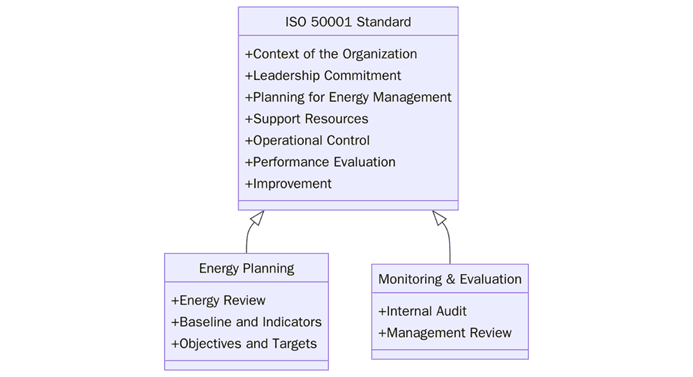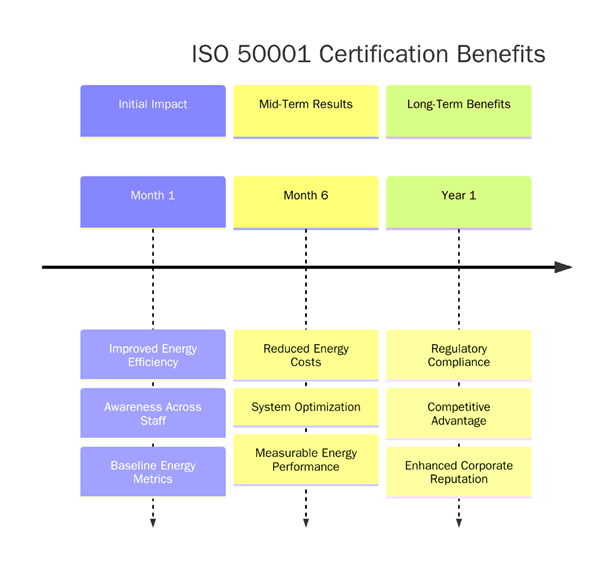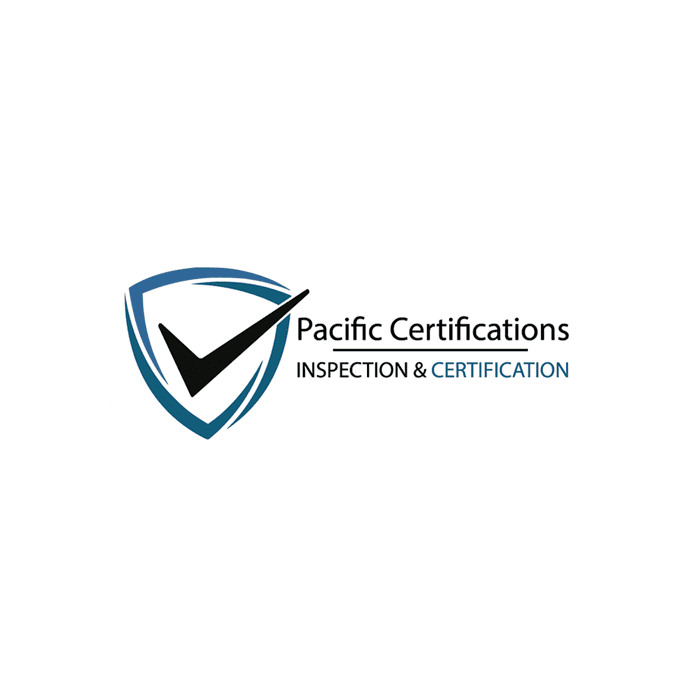ISO 50001 Certification in California: Leading the Way in Sustainable Energy Management

ISO 50001 certification offers a means to approach the establishment and operational maintenance of energy management systems (EMS). This internationally agreed upon certification specification assists organizations in improving their energy, reducing their energy consumption, and enhancing their environmental performance. In California, where sustainability and energy planning are important to your business, ISO 50001 certification builds on manufacturers goals of lowering their energy bills, addresses their regulatory obligations and provides a platform for viewing sustainability.
For more information about how to implement ISO 50001 in your organization, contact us at [email protected].
Introduction
California’s environmental sustainability agenda is at the forefront, with ambitious energy planning and renewable energy targets in place. An organization’s compliance lies within how they operate within this environment, which will involve implementing energy management systems. Therefore, the ISO 50001 certification provides organizations with the means to manage energy performance, mitigate negative environmental impacts and improve operational planning. In playing an instrumental role in energy management, ISO 50001 typically gives organizations great advantages, as it is a better way to reduce energy costs and sustainability objectives, while being consistent with regulatory compliance.
ISO 50001 provides various considerations to help organizations identify opportunities for improvement, track energy performance, develop systems that monitor energy usage against targets and maintain continuous improvement of energy management systems. Organizations leverage ISO 50001 certification to establish a prominent position as energy management and sustainability leaders.
What is ISO 50001?
ISO 50001 is based on the management system model of continual improvement also used for other well-known standards such as ISO 9001 or ISO 14001. This makes it easier for organizations to integrate energy management into their overall efforts to improve quality and environmental management.

ISO 50001 provides a framework of requirements for organizations to:
- Develop a policy for more better use of energy
- Fix targets and objectives to meet the policy
- Use data to better understand and make decisions about energy use
- Measure the results
- Review how well the policy works, and
- Continually improve energy management.
What are the requirements of ISO 50001 Certification?
ISO 50001 certification requires businesses to implement structured energy management practices. These requirements ensure that organizations can optimize their energy use, reduce consumption, and make continuous improvements in energy performance. ISO 50001 certification includes the following key elements that organizations must implement to effectively manage energy use:

1. Energy policy exists whereby organizations must ensure that it reflects their commitment to energy management and sustainability, aligned with business objectives and regulatory requirements.
2. The organization must have an energy management plan with energy objectives and targets so that their energy use can be tracked through performance indicators and there is an assurance of continual improvement.
3. Continuous monitoring and measurement of energy use are required. Through regular audits and reviews of performance, any opportunities for conserving energy are brought to attention, along with confirming its progress towards objectives.
4. Control must be exercised towards energy use in all operation and processes by the organizations. This could include installing new energy-planning technologies, provisioning for process changes, and training.
5. ISO 50001 nurtures culture for continual improvement. Organizations continue to assess and improve their energy management systems to ensure continuous improvement in energy performance.
6. Businesses must stay within the legal boundaries by ensuring their energy management practices comply with energy regulations laid down on the local, state, and national level.
What are the benefits of ISO 50001 Certification?
ISO 50001 certification offers numerous advantages for organizations looking to improve energy planning and sustainability. By adopting this standard, businesses can reduce energy costs, upgrade their environmental performance, and comply with energy regulations, all while improving their overall operational efficiency. Implementing ISO 50001 certification brings several significant advantages for organizations in California:

• The main purpose of ISO 50001 is to reduce energy consumption; hence, organizations may save a lot on utility bills and other inferior operational expenses.
• When energy planning is attained and energy consumption reduced, organizations indirectly reduce the carbon footprint, which is one of the bigger environmental sustainability goals.
• ISO 50001 certification, therefore, gives a view of the organization's commitment to energy management and sustainability, enhancing its image with customers, investors, and regulators alike.
• The certification helps organizations comply with California's stringent energy planning legislation, forming a working partnership with the State in realization of reducing carbon emissions and enhancing carbon-free energy.
• Organizations adopting the ISO 50001 standard improve energy management to ensure the greatest practicable optimization of energy use and prevent energy resources from getting wasted.
ISO 50001 promotes the involvement of employees in energy management and installs a culture of sustainability throughout the organization.
How to get ISO 50001 certified in California?
The process to obtain ISO 50001 certification typically follows these key steps:
Step 1. Developing An Energy Policy
Draft an energy policy, clearly stating your organizational energy objectives and commitments made in energy management.
Step 2. Setting Energy Objectives and Targets
Set objectives for specific measurable energy goals, along with performance indicators against which your energy objectives can be measured for improvement.
Step 3: Performing an Energy Audit
An introductory energy audit should be carried out in order to assess energy use and inefficiencies that exist with a view to prioritizing areas where improvement can be made.
Step 4: Considering and Implementing the Energy Management Systems
Considering the installation of energy management systems in the design and implementation of energy savings within the organization, including some energy management installation of the system: Upgrade of equipment, energy-planning processes, energy management practices.
Step 5: Monitoring and Measurement of Energy Performance
Energy use shall be monitored at appropriate intervals and performance recorded against targets. This will assist in measuring the success of energy management measures and will allow for further improvements to be undertaken if so desired.
Step 6. Internal Auditing and Review
Perform audits internally to evaluate the performance of the energy management system and to make sure that the organization is on track with its objectives.
Step 7: Certification Audit
A third-party certification body will conduct an audit to assess your compliance with ISO 50001. If your energy management practices meet the standard’s criteria, you will receive ISO 50001 certification.
Contact Us
Pacific Certifications can assist your organization in navigating the ISO 50001 certification process, from initial assessment to final certification. Our team of experts will help you develop an energy management system tailored to your needs, ensuring compliance with California's regulations while optimizing energy use.
For assistance, contact us at [email protected].
Visit our website at www.pacificcert.com.
FAQs
Q1: What is ISO 50001?
ISO 50001 is an international standard for energy management systems that helps organizations improve their energy planning reduce energy consumption, and cut operational costs while maintaining environmental sustainability.
Q2: How does ISO 50001 help reduce energy costs?
By implementing an energy management system, ISO 50001 helps organizations monitor and optimize energy use, reduce waste, and identify opportunities for energy savings, leading to lower utility bills and reduced costs.
Q3: Is ISO 50001 certification mandatory for businesses in California?
While ISO 50001 certification is not mandatory, it helps organizations meet California’s energy planning regulations and supports broader sustainability goals. It can also upgrades a business’s competitive edge by demonstrating a commitment to energy management and environmental stewardship.
Q4: How long does it take to get ISO 50001 certified?
The time required to achieve ISO 50001 certification depends on the organization’s size and complexity. Typically, it can take several months to develop and implement an energy management system, followed by an external audit.
Ready to get ISO 50001 certified?
Contact Pacific Certifications to begin your certification journey today!
Suggested Certifications –
Read more: Pacific Blogs

